
Top 10 Tolkien’s Greatest Written Battles
Throughout Tolkien’s legendarium, we bear witness to a bountiful amount of enriching and detailed fights, skirmishes, battles, and wars that show us either the beginning of a conflict or the end of one. Today, I wanted to go over what I think are the top ten best battles from Tolkien’s writings, along with a few honorable mentions to give these spectacles their rightful dues. I will be ranking these based on their significance, consequences, epicness and scope, unique moments, and how thoroughly detailed each one is compared to the next one.
Side note: This ranking concerns only the books. Their on-screen depictions carry no weight here as I am going by what Tolkien wrote—not what Jackson, Bakshi, or McPayne added.
So, without any further ado, let’s begin.
Starting out, I want to highlight a few honorable mentions. While they didn’t make the top ten cut, these three battles, I believe, deserve to be recognized for the epicness and overall scope they bring to the table. Well, I should say two of them bring epicness and scope as the third one is a bit smaller compared to the others, but its consequences and place in the story make up for the lack of grandeur it presents.
These three battles are the Battle of Five Armies, the Battle of the Hornburg, and the Battle of Bywater. Now, before you take your pitchforks out, let me explain my reasoning behind not including these iconic battles in the top ten.
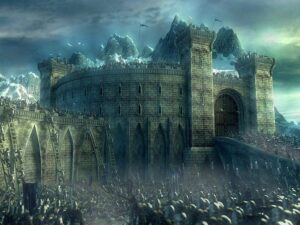
First, the battles in the top ten generally hold more meaning and carry more weight. The consequences are greater in each of those battles when compared to the three honorable mentions shown above. It really wouldn’t be right to replace the Battle of Pelennor Fields with the Battle of the Hornburg just because it might be more noticeable or noteworthy to some. In my opinion, these three honorable mentions, while great in their own right, either do not carry the same weight as the ones in the top ten or are not as important as them. That’s why they are just on the outside looking in.
Okay, enough with that. Let’s get into the actual top ten. At number ten, I have the Battle of Sudden Flame, or the Dagor Bragollach, to be more specific. The Dagor Bragollach is one of the more tragic battles in Tolkien’s legendarium. It includes the deaths of multiple heroes and a sweeping victory for Arda’s first Dark Lord, Morgoth.
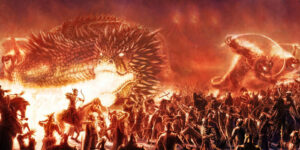
The battle sits at number ten because of just how solid it is at solidifying itself within the variables I provided. The consequences of the Dagor Bragollach shook the very foundations of Arda. The playing field between good and evil shifted in favor of the Dark Lord Morgoth because of this fight, and because of that, a greater domain was created for him and his army of Orcs, Balrogs, and Dragons. He was able to take over the lands in the north and send his adversaries fleeing for their lives into lands unknown. Along with the decimation of the House of Beor in this battle, their leader, Bregolas, also died, along with Galadriel’s twin brothers, Aegnor and Angrod. Morgoth won this battle thanks to the army of Balrogs (yes, I said ARMY) and the inclusion of his first dragon, Glaurung, who set the battlefield ablaze with his scorching fire. So, I think it’s pretty safe to assume that it was a pretty epic fight.
At number nine, I have the Kinslaying at Alqualonde. While not as epic as the Dagor Brachollac, the First Kinslaying is still one of Tolkien’s most interesting and thought-provoking battles to date. Its place in the Silmarillion cannot be understated, as it started a chain reaction that would last not only for hundreds and hundreds of years but arguably till the end of time—depending on your view of the Dagor Dagorath.

In an attempt to take the Teleri’s ships and sail to Middle-earth, the Noldor, led by Feanor and his sons, drew swords upon their kin after a discourse between the two clans did not go in Feanor’s way. It was an evenly matched fight until the second wave of Noldorians arrived at the harbor and slew the rest of the Teleri with help from Fingon and his people. Feanor seized the ships and sailed them to Middle-earth with his sons. As mentioned previously, the battle is in no way epic or large in scope. But its significance and uniqueness compared to other battles, and the consequences that followed are too great to be ignored.
At number eight, I have the Battle Under-Stars or the Dagor-nuin-Giliath. Another First Age, Silmarillion battle, the Dagor-nuin-Giliath is THAT kind of battle. It’s epic, to say the least. And it’s not epic because two great hosts are fighting against each other. It’s epic because of Feanor, his sons, and their resilience to evil. While there are severe consequences that follow this battle, it is more so the actions that take place within it that warrant me ranking it at this spot.

Feanor, his sons, and their followers were met by Morgoth’s legion east of Ered Wethrin in the darkness of night when the moon had not yet risen. The first wave of Morgoth’s army, though greatly outnumbering Feanor and his men, was pushed back and defeated at the hands of the Exiles. A second force was sent to finish off Feanor but was first ambushed by one of his sons, Celegorm, and was pushed back once more. Feanor, in his fury, followed the few surviving Orcs as they fled the battle. It was then when an army of Balrogs came forth from Thangorodrim, and while he did put up a fight against them, Feanor would meet his end that day at the hands of Gothmog, the Lord of the Balrogs. Feanor’s blood-thirsty rage slew him many a foe, but in the end, his wrath and fury would be his undoing. Feanor would curse Angband three times before closing his eyes and passing into legend.
#Feanordidnothingwrong
For my number seven battle, I chose the Battle of Pelennor Fields. The first Third Age battle to be included in the top ten, the Battle of Pelennor Fields, is regarded by many as being the most complete battle of the War of the Ring.

Out of all the fights included in the War of the Ring, the Battle of Pelennor is given arguably the most detailed description out of all of them. It is built up for many, many chapters, and Tolkien lingers on it far longer than he does on, say, the Battle of the Hornburg or the Battle of Five Armies. The battle is fought on multiple fronts with multiple commanders, heroes, and villains to root for and against. It includes iconic moments and tragic deaths, different POVs and character lenses to look through, and an epic resolution that is both overwhelming and satisfying. And who can forget about THAT speech?! All in all, the Battle of Pelennor Fields is an absolute delight to read through and single-handedly shows just how engaging Tolkien truly was as a storyteller.
The sixth-best battle on this list is the Invasion of Eriador. The first Second Age battle in the top ten, the Invasion, is the culmination of the Dark Lord’s takeover of Eriador and his dominance over the Elves of Eregion and surrounding lands. I might be cheating here a little bit by including the Sack of both Eregion and Imladris, as well as the fight that sends Sauron back to Mordor in the Battle of the Gwathlo, but because they are all intertwined and linked into one linear and seamless struggle, I think it’s somewhat fair to keep it as one wholly, inherent battle that acts as a singular struggle.

Unlike prior wars and battles, the Invasion seems more like the end of a conflict rather than the beginning of one. The consequences that jumpstart this conflict would go on to change the course of Middle-earth’s progression for thousands of years. It starts and ends with Sauron controlling the chessboard. His military prowess is on full display here, and it is because of that we see him not only win, but even when he eventually loses, he still somehow gets the upper hand in the end. I think this war not only succeeds in widening the scope of Middle-earth but also shows just how powerful Sauron can truly be, as it acts as his introduction as the next Dark Lord of this realm. It’s an epic war that spans years and years and starts with severe consequences and ends with severe consequences. It has a great cast of characters that highlight the many different races and peoples of Middle-earth and comes to a resolution that builds upon itself over time.
The fifth-best battle on this list goes to the Fall of Gondolin or the Siege of Gondolin if you want to get technical. The Siege of Gondolin is one of the Silmarillion’s most iconic battles. No doubt about that. And its grandeur and scale, along with the significance it has for the rest of the Silmarillion cannot be understated enough. That said, its uniqueness compared to most of Tolkien’s battles is what draws me to it. It’s a battle that surprises in more ways than one. There are revelations and heartbreak, as well as a glorious bounty of unexpected twists and turns to keep the reader engaged. Heck, the entire battle itself is one big twist if you think about it. Morgoth wasn’t even supposed to know that the Hidden City even existed, but thanks to certain evil Elf, that all changed.
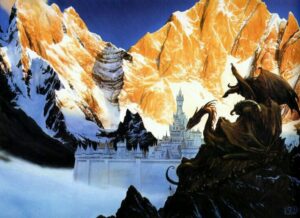
From Maeglin’s betrayal to his attempted assassination of Earendil, to Ecthelion’s historic defense against the Balrogs, and to Glorfindel’s heroics against Gothmog, the Siege of Gondolin shows just how much depth First Age battles truly had. There are so many characters that take part, so much action that is detailed, and so many deaths that occur that it’s hard to read the whole thing for the first time without your jaw hitting the floor.
At number four, I have my personal favorite battle, the Battle of Unnumbered Tears, or the Nirnaeth Arnoediad. Now, I might be biased with this one, but in my opinion, I think the Nirnaeth Arnoediad is one of the best battles Tolkien ever came up with. The commanders, the strategies, the lead-up, how it kicks everything off in the Children of Hurin, and how the aftermath results in a story that is one of Tolkien’s best shows just how great this battle truly is.
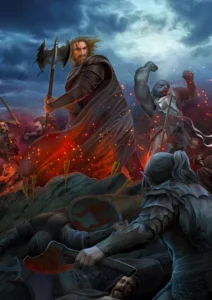
The battle itself is written beautifully by Tolkien, with detailed descriptions of the strategies both sides took in preparation for the battle. The introduction of the forces of good and their commanders and armies was seamless and insightful. Out the gate, Tolkien tells us that the battle would not be easily won by the forces of good and that the armies of Elves, Men, and Dwarves were greatly outnumbered by Morgoth’s overwhelming army. Of Morgoth’s forces, there were over 100,000 Orcs and 1,000 Balrogs that joined the battlefield when the gates of Angband were opened. This number is not definite, however, as Tolkien would go on to change his mind repeatedly about how many Balrogs were present in Arda during this time. I also greatly enjoyed the role the Easterlings played in the battle, as they’re rarely talked about as much in Tolkien’s broader legendarium. The nuances Tolkien adds to the Easterlings during this battle better explain their motivations and their cultures, as well as their place in the story. While the battle itself is definitely one of Tolkien’s largest, it’s the smaller things that I find to be more interesting and eye-catching when compared to the grander scope of it all.
Finally, we have reached the top three. These battles coming up are what I consider the best of the best—the cream of the crop—the potatoes in Sam’s stew. These are the battles that are the most significant, the most detailed, and the most epic of all. The first of these three is the Battle of Dagorlad. I’m also including the Siege of Barad-dur as the two go hand in hand with one another.
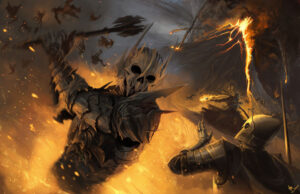
In this battle, the fate of the free-peoples of Middle-earth is decided, and Sauron’s reign as the Dark Lord is challenged by the armies of both Elves and Men… and Dwarves, but mostly Elves and Men. It is THE battle of the Second Age, and it does not disappoint in the slightest. From beginning to end, we have character deaths that range from: “But that guy was so cool!” to “What the heck just happened?!” in just a few pages. The Battle of Dagorlad includes a victory for the forces of good that feels different compared to previous battles. In the fights mentioned previously, the armies of good either won with slim casualties or suffered great defeats. But with the Battle of Dagorlad, not only did the Elves, Men, and Dwarves suffer heavy casualties, with those among the dead being great kings of both Elves and Men, but because of what happened after the battle, evil was allowed to endure, leaving the victory feeling somewhat bittersweet.
At number two, I have the Battle of the Black Gate. Shocking, I know. Before reading this list, you probably assumed this was going to be the surefire number 1, but after getting to this point, I hope that you have caught on to just how much I value the First Age and the Wars of Beleriand. That said, if the Battle of the Black Gate isn’t at number 1, I would be hard-pressed to put it anywhere other than number two on this list.
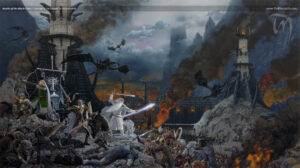
It should come as no surprise that it’s this high up as it’s arguably Tolkien’s most iconic battle he ever wrote. It’s also one that carries extreme weight and significance to the overall story. Tolkien described the battle at great length, and the build-up to it is unmatched. The stakes of the battle are high, and the characters we’ve read about for hundreds of pages are marching in to confront evil one last time. Almost no other battle comes close—emphasis on “almost.”
And here we are. Here at the end of all things. I’ve listed twelve battles thus far, and while each one is just as brilliant as the next, none quite reach the level of our number one battle—the War of Wrath, or in other words, the Great Battle. There is a reason this one battle is referred to as a war in and of itself. If you thought the lead-up to the Battle of the Black Gate or the War of the Ring as a whole was unparalleled, then think again, because the Great Battle was destined to happen before even the sun and the moon were placed in the sky.

This battle is unlike anything mentioned before, as it is quite literally a war between gods. It is the only battle throughout all of Arda’s history where the Valar get involved and actually fight in defense of Arda. Ancalagon the Black is introduced here, and while his exact size is still debated amongst Tolkien scholars and fans today, there is no denying that he was indeed Morgoth’s largest asset and his presence alone was able to shift the course of the war in Morgoth’s favor, though it did not last long. After the war had ended, and the forces of good prevailed, an estimated one million orcs had perished, along with hundreds of thousands of Elves, Men, and other races and creatures. The battle was so substantial and great that it weakened the very foundations of Beleriand and it crumbled into the oceans beneath it. Morgoth lost and was thrown into the void, and the remainder of the defeated scattered into the wilds of Middle-earth, waiting for a new leader to arise and call upon them once more.
The Great Battle IS the magnum opus battle of Tolkien’s writings, and personally, the gap between number one and the rest of the battles on this list is probably as long as Ancalagon’s wings.
Unless we include the Dagor Dagorath. But that’s a discussion for another time.
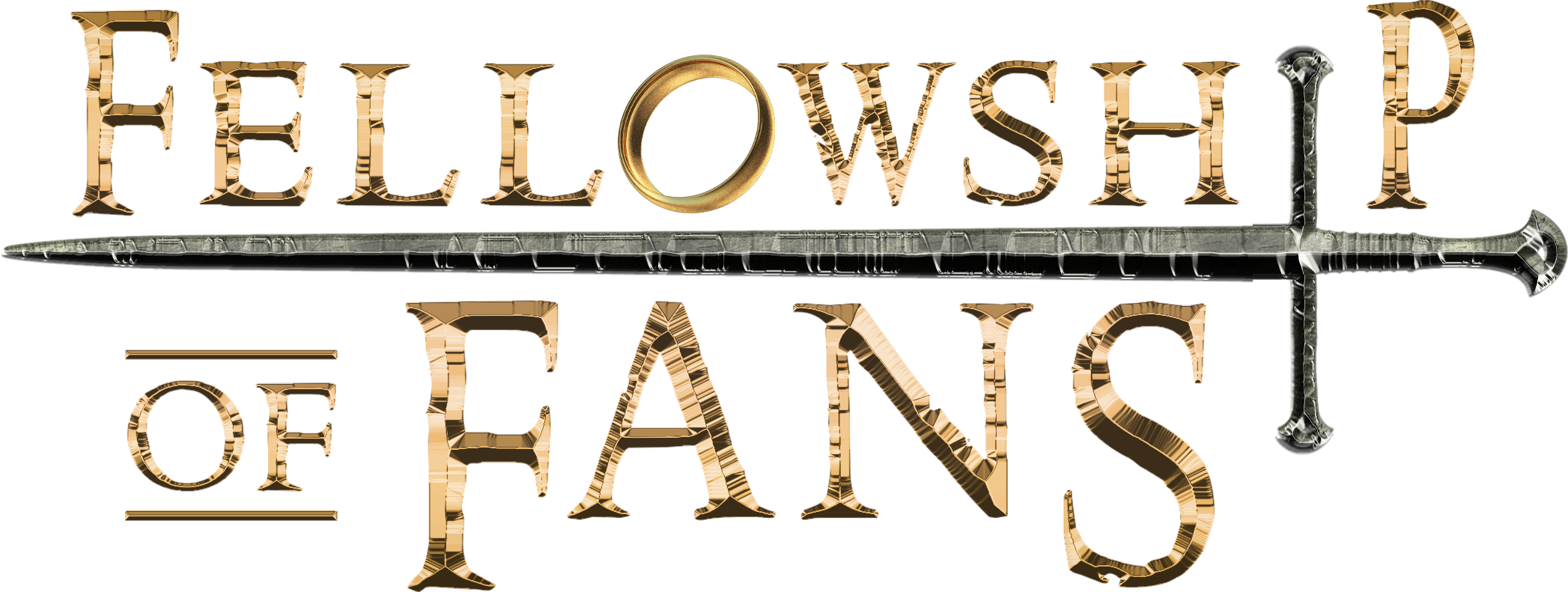
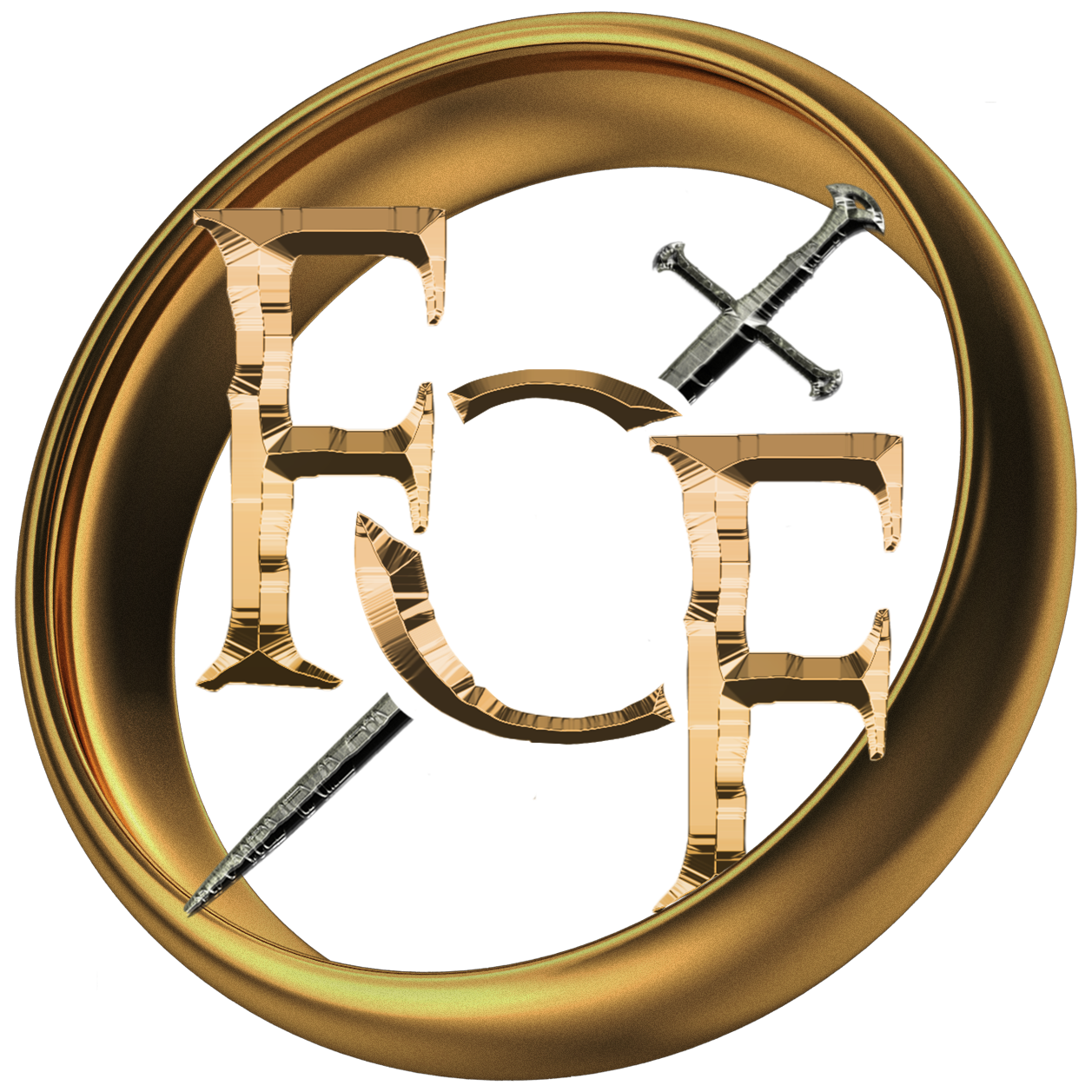
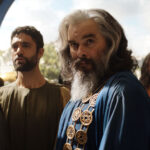

B
September 13, 2023 at 3:05 pmAll great battles you’ve mentioned. Not really a battle but more of a 1v1 fight that I love the way it’s written is Fingolfin va morgoth.